|
FEATURES
Don't Mind the Gap! | China Heritage Quarterly
Don't Mind the Gap!
The Foreign-language Press in Late-Qing and Republican China
Rudolf G. Wagner
Heidelberg University*
Rudolf Wagner is Senior Professor with the Department of Chinese Studies, Heidelberg University, and Co-Director of the Cluster of Excellence 'Asia and Europe in a Global Context: Shifting Asymmetries in Cultural Flows'. He is also the editor of the e-journal Transcultural Studies.—The Editor
Invented History
At any given time many languages have always been spoken and written in China. In most cases this multi-linguality was secured by the political power of the group that shared a given language, such as Mongolian or Manchu, or by the sheer mass of speakers. Multilingualism has also occasionally been (and remains) preserved by government policy. In the middle of the nineteenth century, the treaty ports established in the wake of Anglo-European mercantile forays brought a new constellation of foreign languages to China. These languages were protected by the extraterritoriality of their speakers, but they gained stature among native speakers of Chinese for another reason: they carried the authority of modernity. They were relevant to Chinese interests; they circulated via modern media enabled by new print technologies; and, they reached far beyond the treaty ports through newly developing distribution networks. The result was the sudden and considerable presence of foreign-language media in China. Through the late-Qing and Republican periods, this foreign language presence was supplemented on one side by translations into Chinese, and on the other by the rapid growth in the number of local citizens who habitually read materials (whether published inside or outside China) in Japanese, English, Russian, French, German and other languages. A crucial part of this group were speakers and writers of English of Chinese descent who took a strong political and commercial interest in China's fate.
Language—together with ethnicity, territory and a cohesive state structure—has become one of the key markers defining the identity of the nation-state. Much effort has consequently gone into inventing and managing national or official languages in ways that systematically marginalize the other spoken and written languages that exist within the national territory. In China, where the Stalinist policies on ethnicity, nation and language were implemented with fervor during the foundation years of the People's Republic of China (PRC, 1949-), four particular effects were evident:
1. The 'scholarly' invention of a national press history that reduced it an account of the Chinese-language medium only. This was a trend that was evident in the first histories of the Chinese press produced in the late 1920s,[1] it was continued even by multilingual authors such as Lin Yutang in the 1930s,[2] and has become the universally followed master narrative in the People's Republic. A few 1930s studies of the foreign-language press in Republican China written by trade insiders and published in marginal venues only confirm this overall image.[3] Guides for newspaper advertisements seem to have been the only venue reflecting the actual language distribution of the most important Chinese papers of the Republican period.[4] A pioneering effort at opening up the transnational and translingual dimensions of the Chinese press of this period as a research field was made by Bryna Goodman at the University of Oregon through an international workshop on 'Transnational Dimensions of the Chinese Press'. Even at this workshop, however, the research focus was still mostly on the Chinese-language press.[5]
2. PRC libraries have not catalogued their holdings in foreign-language newspapers, periodicals and books printed in China for the period 1820 to 1949.[6] Frank H.H. King and Prescott Clarke's monumental effort in the 1950s and 1960s to create a master list of the foreign-language treaty port press (1822-1911) and to provide knowledgeable background information on these papers has resulted in a careful mapping of Western collections as well as a series of microfilms that unite these scattered holdings.[7] The substantial holdings in places like Shanghai, Tianjin, Harbin, Wuhan, Canton and Beijing could not be accessed at that time and thus were neither listed nor included in the microfilms. Even today, no similar list exists for the Republican period, either in China or abroad. Worse still, while some of these papers, especially the North China Daily News, have been available for use as historical sources, many scholars have been reluctant to use them for fear of being branded as apologists of feudalism/colonialism/imperialism/orientalism. The consequence has been a lack of specialized studies on any or all of these papers, whatever their actual importance.
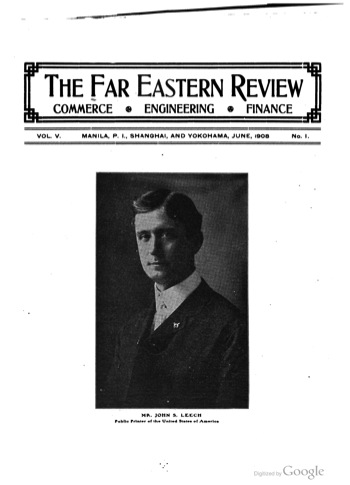
Fig.1 The Far Eastern Review: a journal owned by an American that advocated Japanese interests.

Fig.2 The Hexagon: a Chinese-run journal for the international profession of architects, designers and builders published by the Shanghai Mercury. (Source: Issue IV.3 [1931])
2. The People's Republic has, like other nation-states, gone to great lengths to document a stable 'identity', ignoring the fact that identity is itself a product of cultural exchange. Following a directive by Premier Zhou Enlai, efforts were made from the early 1960s to preserve rapidly crumbling pre-1949 Chinese-language newspapers by microfilming them. These efforts continue today and are far from being completed. They have been supplemented by the digitization of select newspapers, such as Shanghai's Shenbao (申報, 1872-1949).[8] Similar systematic efforts were made for Chinese-language periodicals and even, to a smaller degree, for books. As the 'Chinese press' was conceived of as consisting only of Chinese-language newspapers and periodicals, no efforts were made to preserve foreign-language newspapers. The few commercial efforts in this direction for periodicals were geared toward the foreign market.[9]
3. Strangely enough, it was World War I that taught nation-states the power of harnessing world public opinion through faster and more extensive channels of communication. State-sponsored propaganda boomed, borrowing its tactics from the tabloid press and advertisements, and leading to the proliferation of officially sponsored publications in foreign languages in foreign countries.[10] The rapid development of state propaganda since WWI has had a sizeable impact in China where it lead to the production of foreign-language publications by Chinese governments or political groups. This activity renders all the more absurd the lopsided construction of the historical archive of the Chinese press, which follows a Chinese-language plus Chinese-descent paradigm. Given this imbalance, making a general assessment of the history of the Chinese press is, at this stage, well-nigh impossible.
4. The historical account of a linguistically homogenous press and publishing industry in China has effectively obscured a major research challenge: namely, how to assess the complex structure of a public sphere in which publications in different languages were produced and circulated. Scholars have consequently operated with the unfounded and unquestioned assumption that the borders of the public sphere are co-terminous with those of the nation-state.[11] In the age of the Internet, this assumption has propelled major PRC government investments in making these hypothetical borders real by building a high-tech 'Great Firewall' around China's public sphere. No conceptual framework or specific methodology has yet emerged to deal with the interactions of these manifold agents—Chinese and foreign, official and private—in a scholarly manner. With regard to language such a methodology hinges on a simple but challenging maxim: Don't Mind the Gap!
Foreign-language Publishing
Missionaries, Merchants and Scholars
Despite the odds outlined above, this essay provides a sketch of the foreign-language press in China that goes beyond its dismissive treatment to date, encapsulated by such observations as 'various colonizers published more than one-hundred foreign-language newspapers in major Chinese cities'.[12]
There has always been substantial print publishing in multiple languages in the territory that comprises China today. These languages have included Xixia, Mongol, Arabic, Sanskrit, Manchu, Tibetan and Latin. The treaty ports established in the mid-nineteenth century, however, created a structural change by formalizing a series of contact zones between China and the world. These were border- and language-straddling information communities. Though the exchange of information was denser within the treaty ports than across their borders into the territory administered by the Qing government, they were nonetheless deeply intertwined in the Chinese public sphere. The treaty ports facilitated the commercial sustainability of book, periodical and newspaper publishing in an urban environment. Treaty port publishing was initially geared to resident foreigners and was linguistically and legally outside of the purview of the Qing Court. Nevertheless, the 1860 Tientsin Treaty, which secured for the Western trading powers the right to distribute commercial goods from the treaty ports throughout the Qing Empire was understood by all sides from the outset to include print products.[13] The treaty ports with their close connections to the world at large and their thick flow of news and opinion have concentrated so much public articulation that their distance from Inland China was much greater than that from other international contact zones and linkage points. At this time, the Chinese government's control over the press (in any language) was weak, the only legal instruments of control at their disposal being to deny postal and cable services and to evict journalists from China.[14]
Foreigners pursued a two-pronged publishing strategy in China. Protestant and Catholic missionaries, later followed by Buddhist and Russian Orthodox missionaries, published in Chinese to reach their primary addressee—the Chinese. They simultaneously published in English, German, Japanese, Russian, or French for other missionaries. Protestant missionary publications had long aimed at accessibility, regardless of language. Hannah Moore's Cheap Repository of Moral and Religious Tracts (1795-1798), for example, addressed newly literate rural and industrial workers in England in a simple language with illustrations, thereby attempting to crowd out the morally and politically questionable chap-books popular among those same readers. This approach was replicated in China to the point that some of the London tracts were translated. Journals in English dealing with the Inland Mission in China were, by contrast, written in a much more elaborate code and contained learned theological, philosophical and sociological disquisitions.
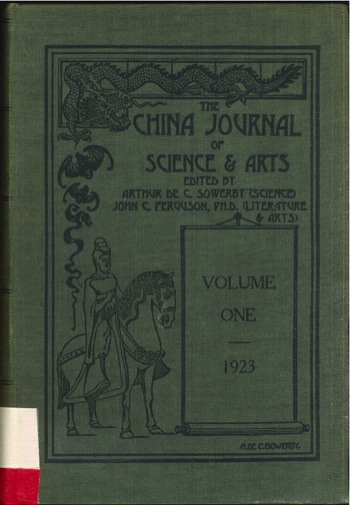
Fig.3 A 'foreign' journal

Fig.4 A 'Chinese' journal
Chinese-language writings by missionaries had a huge impact on the modern Chinese and Japanese lexicon, particularly regarding abstract concepts. These writings included a combination of translations and newly written texts. Translations included tracts from the Inland Mission, encyclopaedias, science primers or homiletic matter. Newly written texts included the novels by Guetzlaff and his wife or the tracts by Timothy Richard on governmental reform in China. Missionaries also exchanged information relevant to their work through Western-language materials. The Chinese Repository (Canton, 1832-1851) and its successor Chinese Recorder (Foochow, 1868-1941) were perhaps the most important of these early Western-language missionary journals. Books and pamphlets dealt with questions of doctrine or recorded the proceedings of missionary conferences. At the same time, missionaries who were active as cultural brokers whose writing in Chinese went well beyond strictly religious matters to include much 'useful knowledge' about the 'world', were also writing about China for their home audiences in Europe or the US
A significant portion of the informed writing about China published in the West during the nineteenth century was written by missionaries, mostly Protestants. The primary agenda of these books and journals was to show the outpouring of the Spirit for a global Great Awakening, and to mobilize support for the missions. Yet they also provided the best 'global' perspective at a time when such perspectives were rapidly expanding. They also represent a classic case of information asymmetry, through which Chinese intellectuals such as Lu Xun (魯迅, Zhou Shuren 周樹人, 1881-1936) derived relevant information about their own country from foreign authors. Missionaries belonged to a transnational and translingual community of information sharing. This community communicated mostly in Western languages. At the same time, they were part of a different information community with Chinese Christians that communicated in various forms of Chinese. While focused on religion, it also introduced technical, scientific, historical and political knowledge from the West.
A second group of foreigners publishing in China were businessmen and merchants. They came from many different countries, had grown up with different languages, and often kept a periodical in their native language. By the middle of the nineteenth century, however, English had replaced Portuguese as the lingua franca and was the most widely read foreign language in the treaty ports as well as in the colony of Hong Kong. The early China-focused information needs of foreign merchants was met by newspapers with up-to-date information on shipping dates, goods and prices, and relevant actions of the Peking court and local high officials. They also provided information about China-related matters from their home countries and supplied background knowledge on crucial political and commercial topics then being discussed internationally. Moreover, they offered entertainment. The early papers of Hong Kong, Canton and Macao (and later Shanghai) served these needs with daily commercial news, translations from the Peking Gazette with commentary, and summaries of relevant articles from the Western periodical press in the style of the British Review of Reviews. The London and China Express (1861-1921), which published a selection of articles from the treaty port press for British readers and a selection of articles from the British press for readers in the Far East, became a prime source of information about China not covered by the missionary press.
The most important of the early English-language commercial papers were the Friend of China, the China Mail and Hong Kong Telegraph in Hong Kong (later also the South China Morning Post), and the North China Herald (1850-1940) in Shanghai. All but Friend of China are now accessible in full-text databases (although these are of uneven quality and of varying ease of access).[15] These papers were very much part of the discussion about the independence of the press from government interference that had been raging in Britain since the 1820s. Their editors and journalists tended to insist on independence even from the papers' owners. In one case, the owner (from Jardine Matheson Company) was reduced to writing a letter to the editor to complain about an attack on his company that appeared in his own paper.[16]
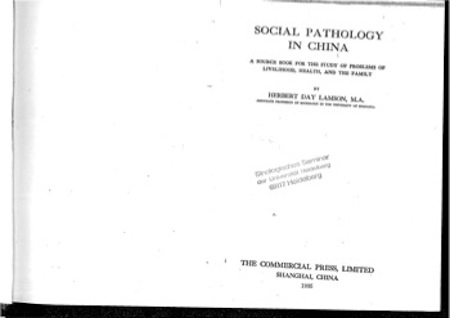
Fig.5 A 'foreign' textbook for teaching sociology in China
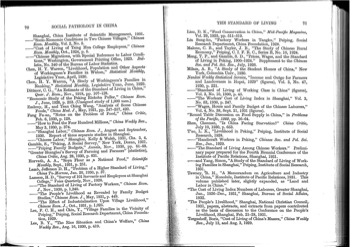
Fig.6 Page with 'Chinese' sources for the teaching of sociology in China from Lamson, Social Pathology in China
After 1900, when the focus of the Qing government shifted to 'Reform of Governance' or the 'New Policies' 新政, which also involved the development of infrastructure and services (both of which were open for foreign competition), the focus of the foreign business community shifted from trade to investment. A different kind of information now became relevant, especially up-to-date information on currency, loans, various other financial matters and new technologies available for infrastructure and industry. The information asymmetry between China and the Powers was even more pronounced here as the relevant journals were all in English. The Far Eastern Review was the key journal for information on engineering as well as relevant central and regional governmental planning.[Fig.1] The Review had been started by the American Bronson Rea (1870-1936) in 1904 in Manila, but in 1912 moved its headquarters to Shanghai. Chinese-run journals in related areas such as architecture, construction and design—fields dominated by foreigners and foreign-educated Chinese—also published in English. An example is the Hexagon, or the Builders' Journal, which came out in Shanghai from 1927 and into the 1930s.[Fig.2]
From early on, Qing officials in formal contact with foreigners appreciated these foreign papers as sources of information on foreign countries. Lin Zexu 林則徐 employed a number of bilingual Straits Chinese for the purpose of gleaning information from them and making detailed notes.[17] Eventually the Tsung-li Yamen 總理衙門 began translating relevant excerpts for internal circulation.
Shanghai's foreign business community kept its distance from the consulates, feeling that its interests were better served by a City Council than by the dictates of far-away bureaucrats. In the early 1860s, the question was often raised whether the Shanghai International Settlement should set itself up on the model of a Hanse city. The independence of the foreign language papers from Chinese government interference, combined with the presumed higher professional standards of journalists, became a key attraction for Chinese readers wary of what they saw as the mixture of cheap advocacy for sponsors and inaccuracy in reporting in Chinese-language papers. The Powers, aware of this high regard, eventually tried to use the foreign-language press to transmit government propaganda to its Chinese readers.
The close interaction between the foreign merchants and their Chinese compradors resulted in a growing number of bilingual people with Chinese as one of their languages in Hong Kong and the treaty ports. This included people from the Straits Settlements, Chinese who had missionary school training, people of mixed parentage, and students who had studied overseas. Western language newspapers thus developed a growing Chinese readership eager for up-to-date information. To expand this readership and their advertiser base, some English-language papers started publishing Chinese-language papers that were largely translations from English-language originals but also contained separate news. Shanghai Xinbao (1861-1872), which was set up under a foreign editor of the North China Herald, is an early example of this trend.
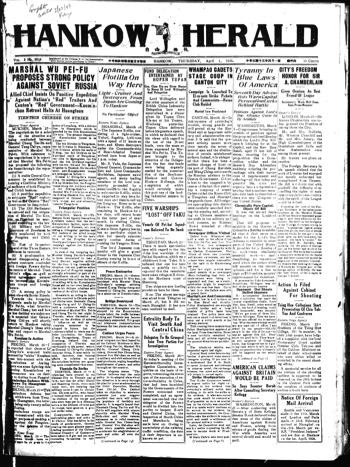
Fig.7 An 'American' paper in Hankow
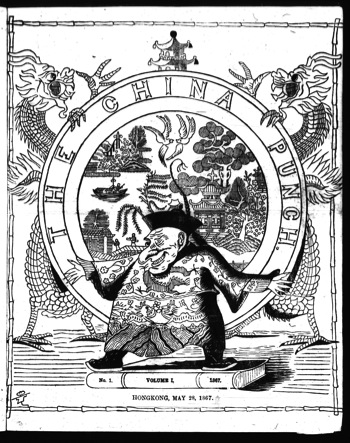
Fig.8 The China Punch: a 'British' cartoon journal, Hong Kong, 1867

Fig.9 The China Punch: a 'British' cartoon journal, Hong Kong, 1872
Eventually, foreigners in Shanghai established full-scale Chinese-language papers, as did Chinese who had worked with foreign publishers in Hong Kong. Shanghai's Shenbao (1872-1949), established and run by Ernest Major (1841-1908), and Hong Kong's Xunhuan ribao (1874-1947), established by Wang Tao (1828-1897), were pioneers. Both papers situated themselves in a niche in the Chinese social imaginaire as promoters of an ideal polity wherein there existed easy 'communication between high and low', between Court and society. Both stressed the foreign origin of the medium, the international nature of their journalistic standards, the global perspective of their reporting and their wide correspondent and distribution networks, which were modeled on the best-known foreign papers and extended across the Chinese-speaking world. If Shanghai was the 'West' in China which one could visit while getting along with speaking Chinese, these papers were the 'West' in the Chinese public realm in which one could read about the world—including China—without knowing a foreign language.
A third group of foreign-language (especially English) periodicals came from the growing community of foreigners and Chinese with a scholarly interest in things Chinese and often also a strong commitment to the betterment of the Chinese political condition. Their scholarly purview included areas that had gained a place in Chinese university curricula (in courses often taught by foreigners) such as the arts, sociology and medicine. The China Journal: Science, art, literature, travel, shooting, fishing (Shanghai, 1923-1941)[Fig.3] was published in English, as were the Chinese Medical Journal, the Nankai Social and Economic Quarterly (1928-1949), and the Chinese Social and Political Science Review.[Fig.4] A very fine emulation of the British Review of Reviews was published in Peking by the Catholic Church under the impressive title Collectanea Missionis Synodalis Pekiniensis (Digests of the Synodal Mission in Peking, 1928-1947). Reacting to the 1925 Papal Encyclical Maximum Illud, which required the foreign Catholic clergy to set aside all attitudes that smacked of imperialism and forget the interests of their country of birth, it reprinted pieces from the English-language scholarly press in China, but also original essays, and included writings in Chinese, Latin, English and French, adding other languages as it went along. The editor helpfully added a Latin summary to each article.[18]
To get a sense of the diversity and quality of English-language publications during the Republican period in the field of social history, one need only look into the bibliographical references given after each chapter in Herbert Day Lamson's superb and extensive textbook Social Pathology in China,[Figs.5&6] published in Shanghai in 1935 by the Commercial Press.[19]
News Agencies and the Press
With the establishment of news agencies and the first telegraph lines in China from the 1880s, the difference between the Chinese- and Western language newspapers narrowed even further, while their interaction continued to be asymmetrical.[20] The news agencies active during the Republican period (Reuters, Wolff, Havas, TASS and eventually United Press, as well as Japan's Tōhō, Nippon Dempo and eventually Rengo) were financed by newspaper subscriptions. Far-flung correspondents allowed papers quick access to news without the need to develop their own correspondent networks. Until 1949, no China-based Chinese-language newspaper or news agency developed a network of international correspondents. The efforts by the KMT and the Nanjing government to set up its own news agency after 1927 were further hampered by their often ham-handed combination of propaganda and censorship.[21] For international news the Kuomintang government and the Chinese-language press remained dependent on Western and Japanese sources even if this often involved reading against their editorial bias. During the Republican period only a small number of the Chinese papers subscribed to Reuters or any of the other Western of Japanese news agencies. The source for the international news in the Chinese papers was thus primarily the Western-language and Japanese papers produced in China. The time-delay only increased the pull of the foreign-language papers.[22]
Western- and especially Japanese-owned papers and news agencies in China often developed their own sources of information in the government and within warlord outfits, as well as in key spots in the country. Many 'scoops' of sensational domestic news appeared in their pages, after which they found their way into the Chinese-language papers. As an institutional tactic, many papers owned by Chinese nationals (both foreign- and Chinese-language) tried to secure some of the benefits of extraterritoriality by having a foreigner as their pro forma manager, or by registering abroad, mostly in Delaware, USA, where it was famously cheap and easy to do so.
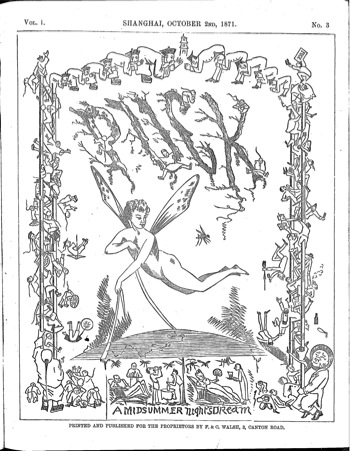
Fig.10 Puck, or the Shanghai Charivari: a 'British' Shanghai cartoon journal, 1872
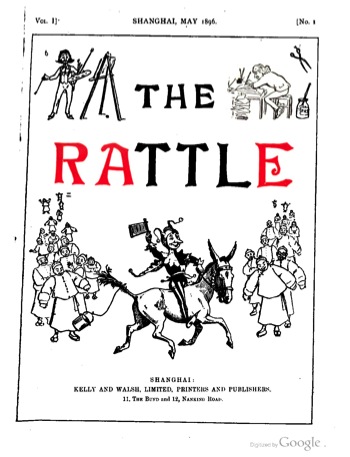
Fig.11 Rattle: an 'American' Shanghai cartoon journal, 1896
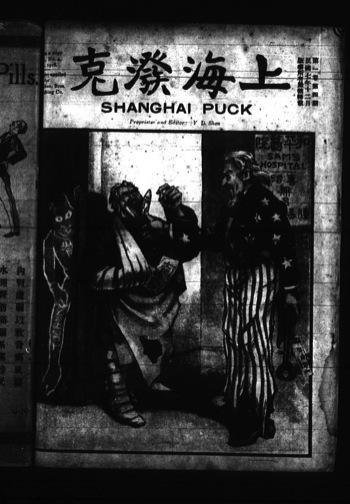
Fig.12 Shanghai Puck: a 'Chinese' Shanghai cartoon journal, 1917
The Chinese-language papers and journals, meanwhile, were sources of information about 'Chinese opinion' for the Western-language press, which carried 'extracts from the vernacular press' following the precedent of Shanghai's North China Herald. As these papers would be the main source of information for new foreign newsagents in the treaty ports, they were not only the main channel via which world opinion reached China, they were also the face of China to the world. Databases of nineteenth-century British periodicals turn up items sourced to the Shenbao, for example, which actually come from the excerpts from the Chinese press. Shiwu bao, Guowen bao and other advocacy journals of the late Qing carry a considerable amount of translations of foreign opinion based on summaries of the international press in the NCH, the Peking and Tientsin Times, the China Mail, the Shanghai Mercury, the London and China Express, or in Japanese papers.
In sum, the connections between the Chinese-language and the foreign-language press are so complex and intimate that any history that artificially limits 'the Chinese press' to just Chinese-language materials marginalizes the multilingualism that made the press of late-Qing and Republican China the rich and complex tapestry that it was. Furthermore, as we will see below, the nationality or ethnicity of editors—an ongoing obsession of Chinese historians—does not predicate the actual editorial line of a particular publication.
Foreign-language Papers
Foreign-language publishing by foreigners in China was initially directed at fellow foreign residents but, before long, the majority of readers were generally native speakers of Chinese.[23] Many of their writers were, too. An ever increasing number of authors of Chinese descent also found that publishing in the English-language press gave them privileged access to an urban, educated and internationally-minded class of people in China without the burden of government censorship. The increasing size and diversity of the readership gave some of these papers print runs and economic stamina by far exceeding what the foreign community alone could sustain. An example for such a paper in a smaller treaty port is the Hankow Herald (1923-1931?).[Fig.7] While this can to a degree be proved for the 'serious' foreign language newspapers and periodicals, it is at least to a degree also plausible for the lighter foreign-language media such as the satirical China Punch (Hong Kong, 1867-1868, 1872-1876),[Figs.8&9] Puck, or the Shanghai Charivari (Shanghai, 1871-1872),[24][Fig.10] the Celestial Empire, the Shanghai Evening News, or eventually the Rattle (Shanghai, 1896),[Fig.11] and the bilingual Shanghai Puck (1918).[25][Fig.12]
From relatively early on, Chinese journalists with long exposure to foreigners started to publish English-language journals. Zhu Qi 朱淇, who had started as a journalist by setting up a Chinese-language paper in the German Kiaotschou Concession moved to Peking to start the Chinese Public Opinion (1908-1909),[Fig.13] which was followed by Li Sum Long's Peking Daily News.[Fig.14] As far as it is known, these editors are people of Chinese descent with journalistic experience, close foreign contacts, and Chinese financial and political backing, but no high political position.
From the late-nineteenth century, various Chinese essayists and politicians suggested not only translating key Western newspapers on a regular basis for distribution in the Chinese provinces,[26] but also making China's official voice heard in the world through an English-language publication. Individual efforts in this direction had already been made by the London ambassador Zeng Jize (曾紀澤, 1839-1890) who wrote the essay 'China: The Sleep and the Awakening' (1887) in English so as to reach an international audience.[27] Discussion of this article was also in English, and some ethnic Chinese, such as Ho Kai, write responses in Hong Kong's English-language press.[28]
At the time, government efforts at producing the equivalent of what in the PRC was later called Reference News 參考消息 (and the more secretive Reference Materials 參考資料) which provided translated articles from the foreign media, came to naught. We do, however, see an increasing number of Chinese political figures as well as the government launching journals in English to reach both a Chinese elite and an international audience. These journal-founders sought international support because of the perceived asymmetry in the agency, power and reach of the Chinese media. Yuan Shikai may have been the first to explore the option of influencing his international and, as a consequence, national standing, through a high-quality biweekly. He subsidized the National Review (Shanghai, 1909-1916),[Fig.15] which was edited and managed by an American, Walter Kirton, for added credibility. It generally supported Yuan as much as it was supported by him (promptly going out of business after his death), but during its life it retained credibility by having substantial information and opinion in each issue written both by Chinese and by Western authors. In its turn, the recently-established Qing Ministry of Foreign Affairs subsidized the Peking Daily News to make it a foreign-language government mouthpiece.[29] These early efforts were repeated by individual KMT leaders, the Nanjing government after 1928, and eventually by the PRC government after 1949, each of which pushed to set up foreign language media.

Fig.13 A 'Chinese' newspaper subsidised by the Qing Foreign Ministry

Fig.14 Fig.14 The continuation of the above
World War I and Propaganda
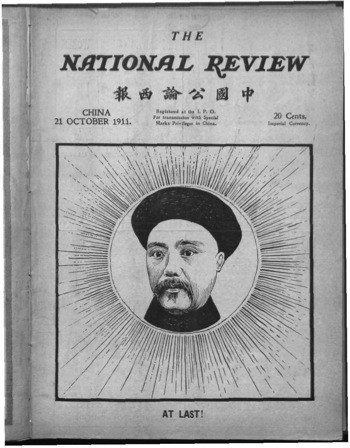
Fig.15 National Review: an American-managed semi-official Chinese paper supported by and supportive of Yuan Shikai
During the Republican period, bilingualism, especially using English, flourished in the print media. English-language journals became a bona fide platform for discussion and scholarly exchange among Chinese, while Chinese foreign-language newspapers were widely recycled sources of information in the Chinese-language press. WWI taught the states involved that supportive public opinion at home and abroad was a crucial ingredient in high-temperature conflicts, and that propaganda was one way to win them. Germany, France, Great Britain and the United States all developed channels of direct, indirect and even covert propaganda. These developments had substantial consequences for the structure and dynamics of the Chinese public sphere, especially with regard to the role of the US, Japanese and Chinese governments.
The Committee on Public Information, which President Wilson founded in 1917 to convince the American public of the need to join the war, had a China Branch whose mission was to prevent a Japanese take-over of China while the US were engaged in Europe. The Committee was dissolved directly after the war. Its Chinese branch, however, which was highly critical of the treatment of China at Versailles, continued on its own. It drew on continued support of prestigious Americans such as former Ambassador Reinsch, George Sokolsky, the news editor of the North China Daily News, Millard, Powell and Donald of the all-important Mile shi pinglunbao 密勒氏評論報 (the English title of which remained Millard's Review, although the Chinese titles varied, 1917-1952),[Fig.16] which emulated the format and style of the American New Republic. Another important backer was Carl Crow, who headed the first advertising agency in China and had contacts with all Chinese opinion leaders. All of these names reappear in advisory and editorial boards of publications in China over the following decades. The China Branch played a crucial role in defining the agenda of the 1919 May Fourth Movement,[30] and would later play a vital role in the effort to shift American public opinion to support of the Chinese Republic against Japanese incursions.

Fig.16 Millard's Review: an 'American' weekly

Fig.17 A 'Chinese' paper founded by Chinese investors, run by an American, associated with the China branch of the (American) Committee for Public Information and subsidized by Feng Yuxiang and the Soviet Union

Fig.18 A 'foreign' daily supportive of Chinese sovereignty
A considerable number of papers and journals were directly or indirectly associated with the China Branch and its strong support for defending Chinese sovereignty. Among them were: Peking Leader,[Fig.17] which had been set up in 1920 by a Chinese consortium that turned over the editorship to the American Glover Clark in 1925; the North China Star (Tianjin); [Fig.18] and, the Shanghai Press. The British presence remained strong through Reuters, but there was little concerted effort at pursuing a foreign propaganda agenda.
Japan countered with its own offensive, increasing its role in English, Japanese and Chinese language newspapers and journals. This was over and above the dense network of related publications it developed in Manchuria around the Manchuria Daily News in an effort to crowd out Soviet and Chinese voices. At the same time, it made great efforts to maintain the perception of higher credibility and accuracy of foreign-controlled papers. Private Japanese interests during the Russo-Japanese War had already acquired a control of the British-owned Shanghai Mercury. The major turning point, however, came in 1919 with the controversy surrounding the treatment of China in the Treaty of Versailles. That year, the North China Standard[Fig.19] began to air Japanese views and undermine the impact of the Peking Leader.[31] It was widely read because it could bank on the many contacts it had among the northern warlords to make sure that it often had the edge in news reporting even if readers might disapprove of its bias.
.
At the same time, the Japanese government made concerted—including financial—efforts to win over foreign journalists, some of which were successful. Bronson Rea, the editor of the Far Eastern Review, a paper that had been quite critical of Japan's role in China, was convinced in Paris with the help of a sizeable annual remuneration to switch his paper's allegiance. Eventually, he even became Manchukuo's 'ambassador' to the United States. At the same time, the Australian William Henry Donald (1875-1946), who manned the editor's desk during Rea's absence in Paris, used his leeway to insert a blistering critique of Japan into the journal when he learned of the shift. He thereupon left for The China Weekly Review.[32] After the Northern Expedition of 1927 and the establishment of the Chinese capital in Nanjing, the standing of Peking (now re-named Beiping) as a newspaper venue and the access of journalists from Japanese-owned papers to exclusive information both declined, and the North China Standard closed down. Outside Manchuria, however, Japanese newspapers and the Japanese news agency gained substantial news traction in the areas eventually controlled by Wang Jingwei's Nanjing government.
The United States and Japan were the most active foreign powers in this arena, but others were not idle. The often-blurred borders between news, propaganda, scholarship and connoisseurship in the media of this period are most apparent in French and German publications. La Politique de Pékin, a journal that announced itself as the 'officious organ of the Chinese government' and came with the supplements La Vie Sociale de Pékin and La Satire de Pékin, enjoyed a vast network of contacts among Chinese intellectuals, scholars and journalists. At the same time, it continued a long-term French effort to break through the increasing dominance of English. This French campaign had begun with Echo de Chine (1901-)[Fig.20] and Le journal de Pékin (1911-1931) with support from the French Foreign ministry. In the Lower Yangtze Valley and eventually in Nanjing, the Jesuit Mission published its Relations de Chine (1903-1931).[Fig.21] In Shanghai, La Revue Nationale Chinoise, revue politique, littéraire et économique tried to promote closer links between French and Chinese business communities. The German Ostasiatische Lloyd, which had been present in China in the late-nineteenth century, was revived in the mid-1930s. Eventually Germany's National-Socialist government came out with an English-language soft propaganda journal based in Japanese-occupied Shanghai, The XXth Century (Shanghai, 1941-1945).[Fig.22] Run by Klaus Mehnert, who had moved from Honululu to take charge, The XXth Century also managed to publish works by Chinese authors such as Eileen Zhang (張愛玲, 1920-1995).

Fig.19 A 'Japanese' paper in Peking

Fig.20 A French-language journal in Shanghai subsidized by the French government

Fig.21 A Jesuit journal in Nanjing subsidized by the Jesuit order in France
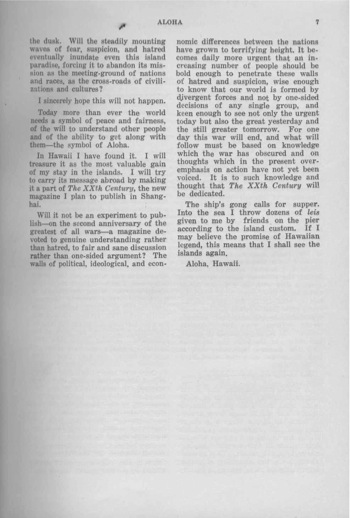
Fig.22 Excerpt with programmatic announcement by Klaus Mehnert, editor of the 'German' National-Socialist sponsored journal started in Shanghai in 1941
Official Publications in English
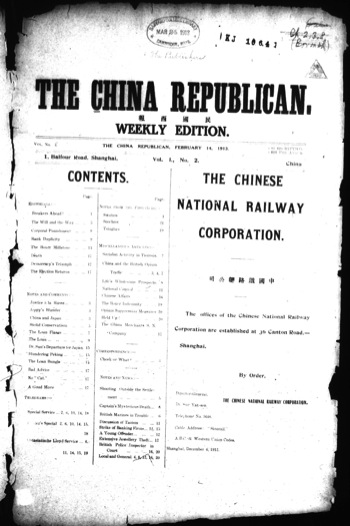
Fig.23 A 'Chinese' journal set up by Sun Yat-sen to counter Yuan Shih-kai

Fig.24 A 'Chinese' bilingual journal allied with Sun Yat-sen and edited by a British citizen of Chinese descent who spoke and wrote in English
As mentioned above, Chinese political leaders began to appreciate the need to have their voice heard in foreign tongues as early as the late Qing. The National Review might have been the first publication to serve this purpose. While supportive of Yuan Shikai's policies it made sure to include high-quality articles by Western friends of China, as well as renowned Chinese such as Dr Wu Lien-Teh, who had gained fame through his role in a pest epidemic in Harbin. Shortly after the start of the Republic, Sun Yat-sen, who had just stepped down from the presidency, set up his own weekly English-language organ, the China Republican (Shanghai, 1913)[Fig.23] to argue his case against Yuan Shikai. Eugene Chen, a leftist writer of English with mixed Chinese-Spanish-Black ancestry from Trinidad, who had advised Sun Yat-sen to form a closer alliance with the Soviet Union, was editor of the bilingual Peking Gazette (Peking, 1915-1917).[Fig.24] Soon thereafter, he founded and edited the Shanghai Gazette (1918-), a paper that was to be the first in what Sun Yat-sen envisioned to be a string of English-language papers in major Chinese cities. When Chen was arrested in Shanghai for his strong anti-British polemics, he not surprisingly cited his British citizenship to secure his release.
The establishment of the Nanjing government in 1928 saw a flurry of changes. In Peking, a battle had been raging between the Peking Leader, which was run by an American but received backdoor support from Feng Yuxiang and the Soviet Union, and the Japanese-backed North China Standard. After the Northern Expedition, the Japanese-backed northern warlords lost out and Peking lost its standing as the capital. Japan's influence in the region waned, with many Japanese-backed papers in Chinese and English closing down. Now re-named 'the Pacified North', Beiping became a news and newspaper desert, and the Peking Leader was sold in 1929 to the KMT, which continued publishing it in Nanjing as The Leader.[Fig.25] Its new editor was Edward Bing-shuey Lee, who was born and educated in Canada, but had joined the Central Propaganda Department of the KMT. This made the paper into an official mouthpiece. In 1930, Lim Boon Keng, a journalist from Singapore who had been connected with Sun Yat-sen, started The Chinese Nation. A Weekly Periodical Devoted to Progress in China (Shanghai, 1930-1931).[Fig.26] It provided strong editorial support to the Nanjing government. Its deputy-editor was Edward Bing-shuey Lee, which made the journal into a semi-official publication.
Critics of the Nanjing government within the KMT set up their own English language journal, United China Magazine (est.1931).[Fig. 27] In its pages, writers like Wang Ching-wei and Tse Tsan-tai (Xie Zuantai, a writer of English of Chinese descent from Australia), took issue with KMT policies and even with aspects of Sun Yat-sen's politics. In 1931, Wang Ching-wei set up his own English-language organ, The People's Tribune, and appointed as editor another native speaker of English, T'ang Leang-li.[Fig.28] Announcing itself since as 'an organ of national-revolutionary thought and opinion', it took the name of the 'Chinese' advocacy journal originally published in 1927 under the editorship of Eugene Chen and Michail Borodin with the help of the Americans William and Rayna Prohme, which had claimed to offer 'a journal of fact and opinion about China and other countries.'
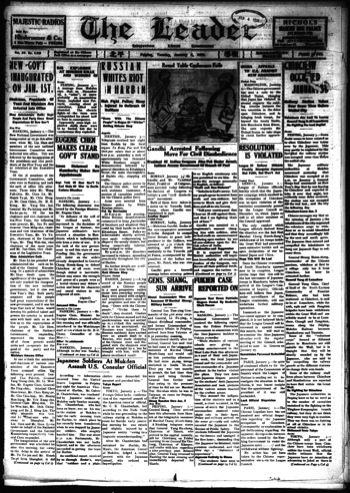
Fig.25 A 'Chinese' journal published as a KMT propaganda organ

Fig.26 A 'Chinese' semi-official KMT journal
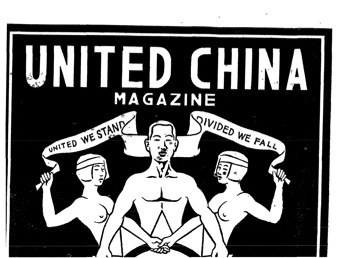
Fig.27 A 'Chinese' independent journal edited by overseas Chinese with English as their written and spoken language

Fig.28 A 'Chinese' advocacy journal supporting Wang Ching-wei, which Wang eventually banned when he set up his own government in Nanjing during the war
Broadly speaking, the perceived role of foreign voices and interests in the Chinese public sphere was such that every paper or journal, in whatever language it was written, and of whatever nationality the owner or manager was, came under suspicion that it might represent some foreign interest. At the same time, the foreign-controlled papers retained an edge in having a better level of information and higher degree of professionalism. The English-language papers and journals especially enjoyed high credibility, so much so that Japan and Germany tried to benefit by themselves producing papers in English.
Independent Foreign-language Publications on Politics
While it is difficult to make strictly separate propaganda, advocacy and opinion periodicals and newspapers on the one hand, and independent and more 'objective' publications on the other, the difference is often detectable in their handling of truths that sit badly with the opinions of the editors. By this measure, some Republican-era journals, though not neutral, stand out for their professionalism, intellectual quality and even-handedness. A number of Millard's Review (mentioned above), which announced in its subtitle that it was 'Devoted to the Economic, Political and Social Development of China and its Intercourse with other Nations', offered a platform to many prominent Chinese intellectuals, government officials, foreign advisors and China hands. In so doing, it retained a solid professionalism its critical stance towards Japan's China policies. The paper sided with the Communists during the Civil War of 1948-1949 and was allowed to continue publishing until 1952, whereupon it was reinvented as the PRC foreign propaganda organ China Reconstructs.
Another example is the bi-weekly Republican Advocate (Shanghai, 1912-1914),[Fig.29] which started publishing immediately after the end of the Qing dynasty. With no publicly announced editor, it committed to 'not antagonism, but co-operation' with the outside world, aiming for China 'to be a free, independent nation, not in the old sense of isolation and exclusion but in the more rational sense of unobstructed individual development, on the basis of co-operation and reciprocity.' Its contributors, who included Timothy Richard,[33] and the personalities it profiled, such as Sir Ho Kai,[34][Fig.30] indicate a network of bilingual supporters of the Republic of both Chinese and Western descent. Its favoured topics related to social reform in China.
Other journals were published abroad by people of Chinese descent committed to the new Republic and willing to defend it against injustice. An example is the monthly Far Eastern Republic, a journal of information of the Republic of China by Chinese people in America and China (San Francisco, 1919-1920).[Fig.31] It was published by the 'Chinese National Welfare Society in America' and was devoted to improving Sino-American relations by featuring 'progressive' articles by the usual Chinese and Western suspects such as Reinsch and Hollington Tong and was highly critical of China's treatment at the Versailles Peace Conference.
The sales pitch of The China Critic (1928-1940, 1945), the subject of this issue of China Heritage Quarterly, recalls those heard in the 1860s when the foreign language papers in Hong Kong and Shanghai started to publish papers in the Chinese vernacular. At that time, the Chinese-run papers promoted themselves as the 'first Chinese paper owned and managed by Chinese'. Like them The Critic, which also dealt mostly with social, political and intellectual issues, used as its subtitle 'the only Chinese owned and edited English weekly'. Its own stance is clear from its foundation following the Jinan Incident and Hu Shih's dry note in his diary that it had been set up to 'counter Japan's noxious propaganda'.[35] Through this and similar journals, Chinese intellectuals reacted to the prevailing asymmetry in intellectual and political debate between articulations in English and in Chinese. As these journals attest, Chinese was not an international scholarly language at the time.
Foreign-language Books and Pamphlets
Most of the foreign-language periodical also issued edited book series on a large variety of topics. Sometimes they even published other periodicals. A publishing list has been compiled for one prominent bookstore and publisher, Kelly and Walsh of Shanghai, but the book and pamphlet publications from periodicals remain a bibliographic desert. For some, such as La Politique de Pékin, the number of books would include dozens of titles; others, such as Millard's, published reference works on important personalities in Republican China. Still others, such as the Shanghai Mercury, operated more as print shops that also provided the required legal address. Apart from these institutionally-stable publishers, a flurry of pamphlet-like publications—mostly in English, but also in Japanese and Chinese—appeared amidst the rising political temperature of the 1930s.[36] These were published in China's treaty ports, but also in the United States and England. Trying to make the case for the American and British audiences to rally for China or Japan in the unfolding war, these pamphlets used the entire gamut of strategies to enhance the credibility of their message—photographic evidence, personal witnesses, and above all foreign voices supporting the cause. The quandary in which the KMT government found itself—in Nanjing and then in Chongqing—is most clearly expressed in the appointment of Hollington Tong in October 1937 as head of foreign propaganda and foreign news censorship. Tong, a graduate of the Missouri School of Journalism, had come back to China with the plan to set up a liberal independent paper along Western lines. In the event, he ended up setting up a propaganda apparatus that, needless to say, also relied on foreign voices (such as Donald, Powell and Timperley) to enhance its sway.

Fig.29 An independent and anonymous 'Chinese' journal
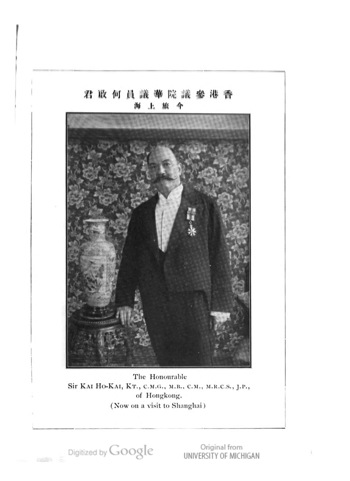
Fig.30 A prominent Anglophone Chinese profiled in Republican Advocate: Sir Ho Kai
In Conclusion
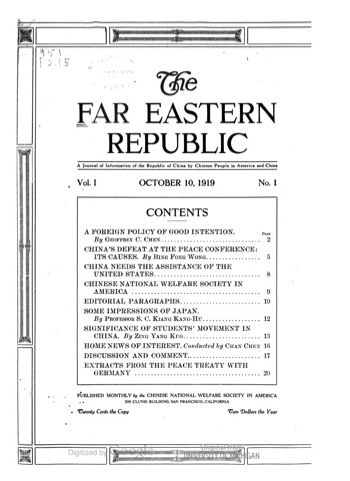
Fig.31 A 'Chinese' journal based in the United States that supported the Republic
The Chinese media of the Republican period operated in a public sphere that was multi-lingual and transcultural. It was concentrated in the treaty ports and above all in Shanghai, and was connected more closely to similar nodal points overseas than it was to the depths of the Chinese hinterland. These media were connected to information communities characterized by a higher level of communication among their members than with members of other information communities. They were, however, communities that were only loosely defined; they were held together by a certain business interests, religion, language, ethnicity, or political or cultural commonalities. While some of the papers were addressed primarily to nationals of countries where the given language dominated (such as the German-language Ostasiatische Lloyd, the Japanese-language Shina, or the Russian Zaria), language did not determine the nationality or ethnicity either of readers or contributors, not least given the considerable number of bilingual readers in East Asia. The vast majority of the readers of the English-language Chinese press did not have English as their native language. Chinese-language papers in general had less access to information and opinion (especially international) than did most foreign-language papers.
The Chinese-language press thus drew heavily on foreign-language news services, newspapers and journals. Readers of Chinese-language background who were active participants in the public sphere—including government officials—depended on information resources that were only available in other languages than Chinese to supplement the selection that was also available in Chinese translation.
To reduce the Chinese public sphere to the geographical territory of the nation-state, or to the Chinese language alone, is to misrepresent reality. To give special attention to Chinese-language sources or to journals whose views chime with those of later Chinese governments is similarly fated to produce results attractive only to nationalist historians. None of these approaches can stand the test of scholarly verification. Worse, such approaches cannot account for why the Republican period—for all its political, ideological and military turmoil—was the intellectually liveliest era of China's twentieth century. The achievements of that era in all fields—be they in scholarship, literature, philosophy, politics or the arts—remain seminal to this day. Was this not, perhaps, a result of that period's high level of transcultural interaction? The question is well worth pursuing. China has now begun to actively reengage with the world and recast its history as one of openness to the world. Perhaps it might now be willing to do its share in providing access to the record of global interaction that lies buried in its archives and libraries. And perhaps a new generation of young scholars will be willing to do the research needed to understand the dynamics of that period's complex and fascinating public sphere. As their motto I would suggest: Don't Mind the Gap!
Notes:
* I am exceedingly grateful to Christopher Rea (no relation to the Bronson Rea mentioned in this study) for his careful and very knowledgeable editing. For surviving mistakes, however, I have to claim exclusive responsibility.
[1] The seminal and often reprinted (and bowdlerized) work sporting this approach is Ge Gongzhen 戈公振, Zhongguo baoxue shi 中國報學史, Shanghai: Commercial Press, 1928.
[2] Lin Yü-tang, A History of the Press and Public Opinion in China, Chicago: Chicago University Press, 1936. Informative, but also largely identifying the Chinese press as the Chinese language press, is Stephen MacKinnon, 'Toward a History of the Chinese Press in the Republican Period', Modern China, vol.23, no.1 (January 1997): 3-32.
[3] Thomas Ming-heng Chao 趙敏恆, 'The Foreign Press in China', preliminary paper prepared for the Fourth Biannual Conference of the Institute of Pacific Relations to be held in Hangchow (21 October to 4 November 1931), Shanghai: China Institute of Pacific Relations, 1931. Thomas Chao was working for Reuters at the time. Rudolf Löwenthal, 'The Present Status of the Press in China', Collectanea Commissionis Synodalis Pekiniensis, 8 (1935): 932-933. Rudolf Löwenthal was teaching journalism at Yenching University, Peiping. Chen Tzu-hsiang, 'The English Language Daily Press in China', Collectanea Commissionis Synodalis Pekiniensis, 10 (1937): 900-903.
[4] Carl Crow, Newspaper Directory of China (including Hong Kong), Shanghai: Carl Crow Inc., 1935.
[5] Some of the papers presented there were published in a special issue of China Review entitled 'Networks of News: Power, Language and Transnational Dimensions of the Chinese Press, 1850-1949', China Review 4.1 (2004).
[6] To give some random examples, the Shanghai Municipal Archive has a good run of the Shanghai Evening Courier from the 1870s; the Zi-ka-wei branch of the Shanghai Library seems to have, among other things, good runs of the Journal de Shanghai, the China Press and, scattered on the shelves, issues of The Hexagon or the Builders' Journal (Shanghai, 1927-).
[7] Frank H.H. King and Prescott Clarke, A Research Guide to China Coast Newspapers 1822-1911, Cambridge: East Asia Research Center, 1965.
[8] Qingpingguo Shuju Zhongxin 青蘋果數據中心, Shenbao 申報, 1872-1949.
[9] An example is the filming in 1993 by a certain 'Micrographic Data Processing Center of Hai Fu, China, in Nanjing', seemingly outside of the official preservation program, of Millard's Review of the Far East/ Mile shi pinglunbao 密勒氏評論報, which was published 1917-1952 under a variety of English titles.
[10] This development, which went hand in hand with that of advertising and was often managed by the same people (such as Edward Bernays in the US or Carl Crow in China), has been intensely studied from the end of WWI. By the late 1930s, 'foreign propaganda' had become one of the three core ingredients of international relations in Carr's seminal outline of this new field. See Edward Hallett Carr, The Twenty Years' Crisis, 1919-1939: an introduction to the study of international relations, London: Macmillan, 1939.
[11] For a critical take of Habermas' linking of the nation's borders and the public sphere, see Rudolf G. Wagner, 'Introduction', in id., ed., Joining the Global Public. Word, image, and city in early Chinese newspapers 1870-1910, Albany: SUNY Press, 2007.
[12] Young Z. Volz, Chin-chuan Lee, 'Semi-colonialism and Journalistic Sphere of Influence', Journalism Studies 12(2011): 5, 559.
[13] See R. Wagner, 'The Shenbao in Crisis: The International Environment and the Conflict between Guo Songtao and the Shenbao', Late Imperial China 20.1(1999): 123-124.
[14] Chao, The Foreign Press in China, pp.16-18. A documentation and protest concerning one string of such efforts will be found at China's Attempt to Muzzle the Foreign Press. An Account of the Endeavours of Nanking to Suppress the Truth about Affairs in China, Shanghai: North China Daily News and Herald, May 1929.
[15] The open source but messy access for the Hong Kong papers is at: http://hkclweb.hkpl.gov.hk/hkclr2/internet/eng/html/welcome.html. The North China Herald is available with a full text search option to subscribers Primary Source Periodicals (Brill).
[16] King, Research Guide, p.42.
[17] 'Lin Zexu "Yangshi zalu" ', Zhongshan daxue xuebao (Shehuikexue ban) 3 (1986): 14-34.
[18] For the background of this journal, see Jean-Paul Wiest, 'Introduction', Collectanea Commissionis Synodalis. Digests of the Synodal Commission of the Catholic Church in China, 1928-1947, Bibliographic Guide, Bethesda: Academic Editions, 1988, pp.I-XV, online at: http://cisupa.proquest.com/ksc_assets/catalog/2811_CollCommSynodCathChina.pdf.
[19] Herbert Day Lamson, Social Pathology in China: a source book for the study of problems of livelihood, health, and the family, Shanghai: Commercial Press, 1935. Lamson taught sociology in Shanghai. He lectured in English and employed English-language teaching materials.
[20] For the competition between the different foreign networks, see Peter O'Connor, 'Endgame: the English-language press networks of East Asia in the run-up to war, 1936-41', Japan Forum, 13:1: 63-76.
[21] Hollington Tong, who had studied at the Mississippi School of journalism, describes some of the practices of the KMT censorship office before he took over.
[22] See Chao, The Foreign Press in China, pp.4-9.
[23] Powell, who took over editorship of The China Weekly Review from Millard, noted in his autobiography that against his original assumption the majority of the readers of the Review had Chinese as their native tongue. See John B. Powell, My Twenty-five Years in China, New York: Macmillan, 1945, pp.12-14.
[24] On the inverse side, La politique de Pékin had a regular supplement La satire chinoise, which reproduced cartoons from the Chinese-language press with comments in French. The entire set was eventually published as La satire chinoise, politique et sociale: 1927-1936, Peiping: La Politique de Pékin, 1936.
[25] See Sun Yirang 孫詒讓, Pingdian Zhouli zhengyao 評點周禮政要, Shanghai: Rixin Tushuju, 1903.
[26] Asiatic Quarterly Review, 1(1887).
[27] For sources and an analysis of this debate, see Rudolf Wagner, 'China "Asleep" and "Awakening": a Study in Conceptualizing Asymmetry and Coping with It', Transcultural Studies 1 (2011), at: http://archiv.ub.uni-heidelberg.de/ojs/index.php/transcultural/article/view/7315/2920.
[28] Wang Licheng, Zhongguo jindai waijiao zhidu shi, Lanzhou: Gansu Renmin Chubanshe, 1991, p.180.
[29] Hans Schmidt, 'Democracy for China: American Propaganda and the May Fourth Movement', Diplomatic History, 22.1 (1998): 1-28.
[30] On the link of this paper to Japan see, besides the comments by Chao, Feng Yue 馮悅, 'Huabei zhengbao fuwu Riben waijiao fenxi' 華北正報服務日本外交分析, Xinwen chuanbo shi, 6 (2007): 85-86.
[31] Albert Selle, Donald of China, New York: Harper 1948, p.227. It is interesting to note that Donald, who seems never to have learned Chinese, was able to live a full life in Republican China that included interviewing Chinese leaders for his paper, advisory and secretary functions for Sun Yat-sen, Zhang Xueliang and Mme Chiang as well as a ministerial stint with the KMT government.
[32] Timothy Richard, 'How to Promote Peace Between East and West', Republican Advocate 1.2 (April 1912): 61-64.
[33] 'Sir Kai Ho-Kai. Kt, C.M.G., M.B., C.M., J.P.', Republican Advocate 1.3 (1912): 112-113.
[34] Hu Shi, Hu Shi riji quanji (1928-1930), vol.5, Taipei: Liangjing Chubanshe, 2004, p.417. My thanks to the work of Wei Shuge for this reference. For more on Wei's dissertation, 'To Win the West: China's Propaganda in the English-Language Press, 1928-1941', see the New Scholarship section in this issue of China Heritage Quarterly.
[35] A number of them have been reprinted. See Peter O'Connor, ed., Critical Readings on Japan, 1906-1948, Series 2, Folkstone: Global Oriental, 2011.
|